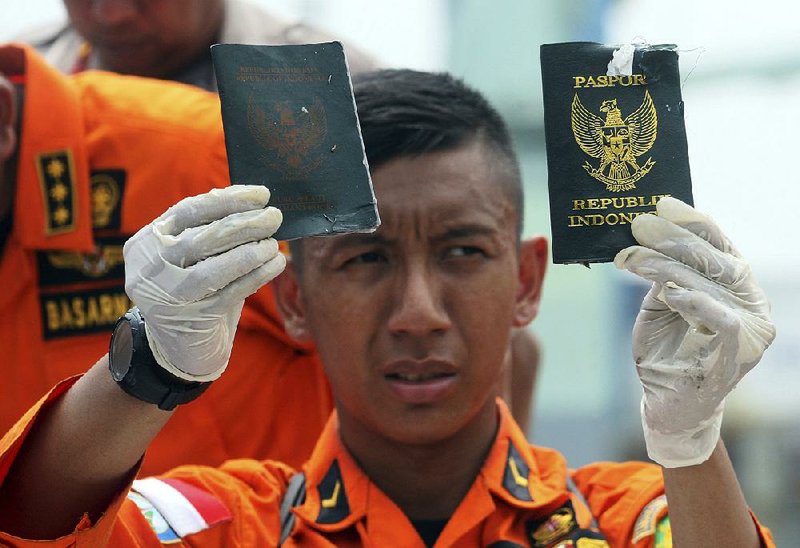JAKARTA, Indonesia -- A top Indonesian military official said a search and rescue effort has identified the possible seabed location of the Lion Air jet that crashed Monday in waters northeast of Jakarta.
Armed forces chief Hadi Tjahjanto said a team would be sent to the identified location to confirm the findings.
Debris and some human remains were found previously but not the main fuselage and the black boxes.
The 2-month-old Boeing jet crashed Monday just minutes after takeoff from Jakarta, killing all 189 people on board.
The exact sequence of events that led to yet another aviation disaster in Indonesia is still unclear.
But the crash took place in broad daylight and good weather, and involved a new plane. So experts are looking to see if an underlying problem, mechanical or human or both, caused it.
"This doesn't seem like a more normal crash caused by something like weather or an old plane," said Gerry Soejatman, an Indonesian aviation expert.
One theory is that the pilots received inaccurate altitude or speed readings from probes affixed to the outside of the airplane, part of a sensitive set of instruments called the pitot-static system.
Problems with these instruments are thought to have contributed to other crashes. And it's possible they were the issue the night before the crash, when the same Lion Air plane experienced problems flying to Jakarta from the resort island of Bali. The accuracy of the probes can be affected if they ice over or are inundated by moisture or insects.
On Tuesday afternoon, Indonesian transportation officials acknowledged that they had not spoken to ground crews about the plane and the problems it experienced after it left Bali.
"We haven't questioned the engineer or the technicians from Sunday's flight yet because we have very limited human resources," said Ony Soerjo Wibowo, an air safety investigator for the Indonesian Transportation Safety Committee, which is taking the lead in the inquiry into the crash.
It is also possible, experts said, that the type of plane involved in the crash -- the Boeing 737 Max 8, which entered commercial service only about a year and a half ago -- may have another flaw that had not manifested itself in other fleets before because it is so new.
Pilots and aviation analysts, however, cautioned that they had not heard chatter about any such problem with other Max 8 planes.
Lion Air has racked up a troubling air-safety record, with at least 15 major incidents. The company's spate of problems limned a surge in crashes that afflicted the entire Indonesian aviation industry, causing Western nations to ban Indonesian carriers.
Pilots who worked for Lion Air and its competitors in Indonesia said training for flight and ground crews sometimes did not keep up with the latest developments in new planes. And aviation experts have raised questions about whether pilots like Bhavye Suneja, the captain of Flight 610, are given adequate training in flying planes during emergency conditions or in handling new technology like that in the Max 8.
The 737 Max family of planes is Boeing's fastest-selling in history, the company said, with nearly 4,700 orders worldwide. Indonesian transport authorities said they had ordered an inspection of all the Max 8 jets operated by domestic carriers.
On Tuesday, Ony, the Indonesian safety investigator, said the immediate priority was finding the black boxes -- the flight data recorder and cockpit voice recorder -- which may offer critical information about what happened in the final minutes of the flight.
Information for this article was contributed by Hannah Beech of The New York Times; and by Niniek Karmini, Stephen Wright, Andi Jatmiko and Ali Kotarumalos of The Associated Press.
A Section on 10/31/2018

